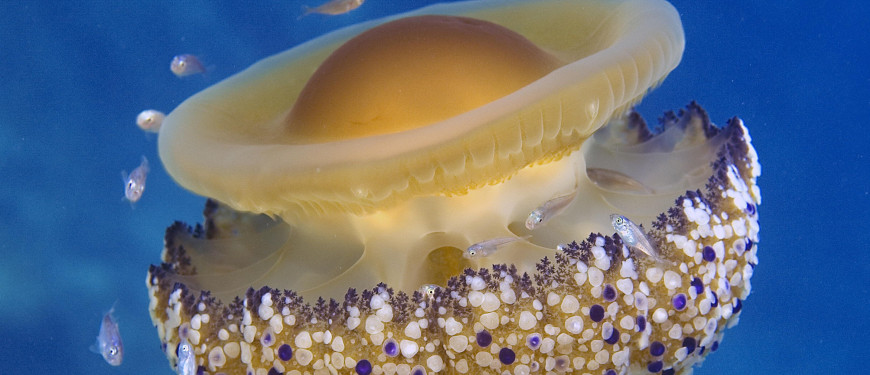Understanding marine food webs are of particular interest to ecologists in providing a holistic view of ecosystem’s structure, functioning and dynamics. Therefore, defining trophic interaction of key groups and species in the ecosystem, with taxonomic resolution, is essential to support sound conservation and resource management strategies in the Anthropocene. We are interested in the marine food web where jellyfish (cnidarians and ctenophores) take over the top predator position or build a bloom. Gelatinous zooplankton constitute one of the most diverse, abundant, and widely distributed groups with high taxonomic diversity in planktonic food webs, yet the trophic structuring and importance of this “jelly web” remain incompletely understood. European research topics such as Blue Growth, Green deal and Blue Bioeconomy has furthermore sparked our interest in potential applications where jellyfish biomass can be used as innovative (but sustainable) raw materials.
In freshwater predatory fish is crucial to a balanced lake ecosystem providing essential ecosystem services and are thus also internationally a large field of research. Larger specimens of pike are hard to catch with traditional scientific methods information, thus a lot is still to learn. We aim to pursue this as there is a huge potential to further unravel the effect of pike co-hordes on lake ecosystem structure.
Research projects:
- HOTMIC, Horizontal and vertical oceanic distribution, transport, and impact of microplastics, JPI Oceans
- GoJelly, A gelatinous solution to plastic pollution, Horizon 2020/ Blue Growth (6 million €)
- INIGEL, Interactions between native and invasive gelatinous zooplankton within the Baltic Sea food webs
